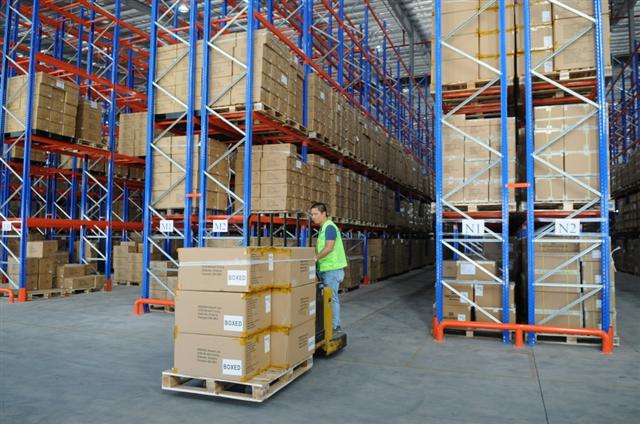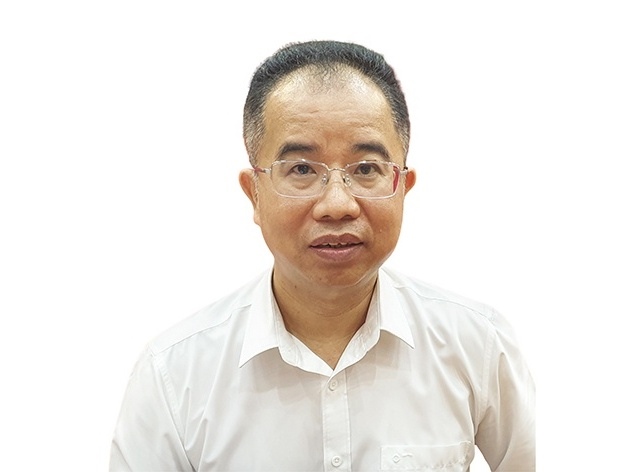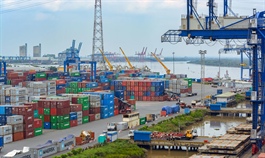Vietnam strives for upper middle-income level by 2025
Vietnam strives for upper middle-income level by 2025
Vietnam seeks to leave the ranks of lower-middle-income countries by 2025, Prime Minister Nguyen Xuan Phuc told the National Assembly in presenting the government’s tasks towards 2025. In the coming months, Vietnam will continue to focus on the government’s dual task of fighting the Covid-19 pandemic and promoting socioeconomic development in the new normal, he said.

Exports continue to be a bright spot of Vietnam’s economic picture
|
Bright spots
In the 2016-2020 period, the domestic and international situation proved complicated. Nonetheless, Vietnam achieved positive results despite the effects of the Covid-19 pandemic on countries around the world, including Vietnam, PM Phuc reported.
Specifically, macroeconomic stability has been maintained and inflation has been curbed at a low level, while growth quality has increased. Average annual growth reached 6.8 percent in the 2016-2019 period. Vietnam’s gross domestic product (GDP) growth reached 2.12 percent in the first nine months of 2020 and is expected to reach 2-3 percent for the whole year, making Vietnam one of the rare countries in the region and the world to still post positive growth. In particular, the country has signed and implemented numerous free trade agreements, including new-generation ones like the Comprehensive and Progressive Agreement for Trans-Pacific Partnership (CPTPP) and the EU-Vietnam Free Trade Agreement (EVFTA).
However, PM Phuc said Vietnam still faced many shortcomings. The country’s economic growth for 2020 and in the 2016-2020 period did not reach the set target due to the impact of the Covid-19 pandemic. Administrative reforms remained inadequate, while law enforcement and adherence were not strict in some areas. In addition, international integration capacity remained limited. He also pointed out limitations in the resilience and competitiveness of the economy, unsatisfactory progress in infrastructure development and insufficient human resource training.
10 major tasks
The government’s aims are to turn Vietnam into a modern industrialized country and leave the ranks of lower-middle-income countries by 2025. Lower middle-income economies are defined as those with a per capita gross income of between US$1,036 and US$4,045, while upper middle-income economies have a per capita income of between US$4,046 and US$12,535.
PM Phuc said the government would continue working on its dual task of fighting the Covid-19 pandemic and promoting socioeconomic development in the period being dubbed “the new normal”.
To accomplish the goals, 10 tasks and solutions must be fulfilled. Those include:
- Implementing measures seriously and effectively to minimize the impact of the Covid-19 pandemic.
- Completing socialist-oriented market economy institutions, maintaining macroeconomic stability and curbing inflation at a low level.
- Promoting economic restructuring associated with growth model reform and improvements of labor productivity, quality, efficiency and competitiveness.
- Mobilizing and using resources in an effective manner and promoting the implementation of key infrastructure projects.
- Improving the quality and training of human resources and increasing the application of science and technology.
- Promoting cultural values and enhancing the quality of people’s lives.
- Managing, exploiting and using natural resources in an effective and sustainable manner, paying attention to environmental protection, responding to climate change and overcoming the consequences of natural disasters.
- Improving the effectiveness and efficiency of state management, combating corruption and settling complaints and denunciations.
- Consolidating defense and security and improving the country’s position and prestige in the international arena.
- Strengthening information dissemination to create social consensus.
Vu Hong Thanh, chairman of the National Assembly’s Economic Committee, suggested the government develop the economic growth targets for the 2021-2025 period in a cautious manner, explain the basis for the new GDP calculation method and submit it to the National Assembly for consideration and approval, complete institutions to participate in the fourth industrial revolution, and seek measures to exploit the domestic market and expand export markets.



























